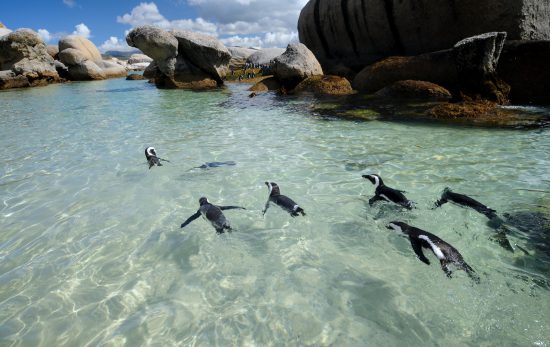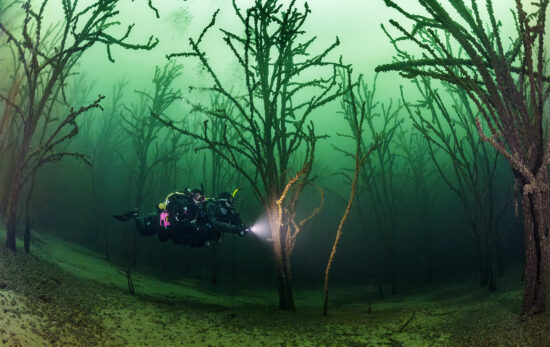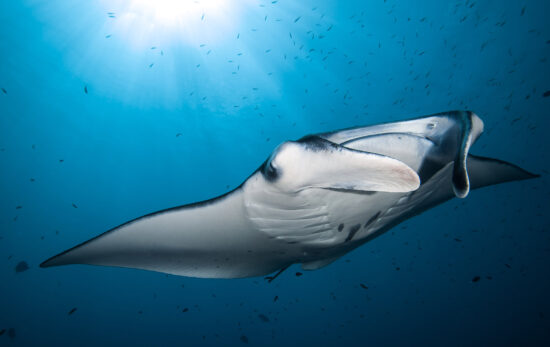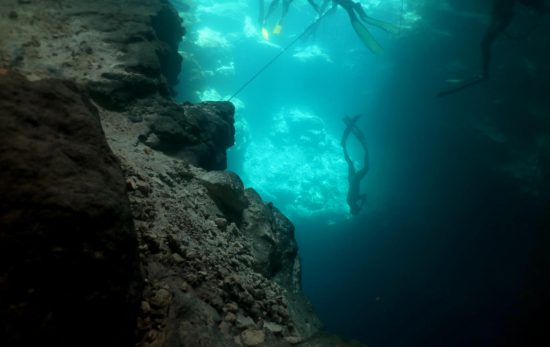Mexico’s Riviera Maya has won the world over with its unique freshwater cenotes, stunning for their visibility that extends 100ft (30m) and beyond. Some of these dive sites have areas that can give visitors the feel of a cave, but with little or no overhead environment. Others are suited to guided cavern tours and cavern diving, and still others are suited primarily for fully qualified cave divers. Note that even the ones suited to open water diving have delicate formations that took centuries to form, so you want to be sure you have good buoyancy skills before your first guided tour of a cenote; think about the PADI Peak Performance Buoyancy course to refine them.

Types of Cenotes Dives
Important: Do not exceed the limits of your training level by entering an overhead environment for which you’re not qualified. Divers who enter overhead environments without the required training and equipment have diving’s highest accident fatality rate.
Cenote Open Water Dives
A few cenotes have large open water basins you can explore. However, there is almost always a cave entrance; divers who are not certified cave/cavern divers (or under appropriate instruction/leadership) should stay out and remain in the open water area.
Cavern Tours
At some cenotes, certified Open Water Divers can take a cavern tour guided by professionals qualified by some of the cave diver training organizations to lead such tours. This is a highly controlled, limited tour along a line into the cavern zone, which is defined as within the natural light zone and within 130 to 200 ft (39-60m) (some minor variations here) of the surface.
Cavern Diving
Most cenotes (but not all) have overhead areas that certified PADI Cavern Divers are qualified to visit. See your PADI Instructor or dive shop about the PADI Cavern Diver Specialty to learn more. The end of the cavern zone is often (but not always) marked with a warning sign.
Cave Diving the Cenotes
This is entering a cave more than 200ft (60m) and/or going beyond the light zone, and/or passing a narrow area (past cavern limits) and requires certification as a cave diver. Almost all cenotes have cave zones. Ask your PADI Instructor or dive shop about the TecRec Cave Diver Distinctive Specialty if this level of diving interests you.
Best Cenotes Dive Sites for Open Water Divers
There are many dive sites that are suitable for Open Water Divers. Coming up are six of our favorites.
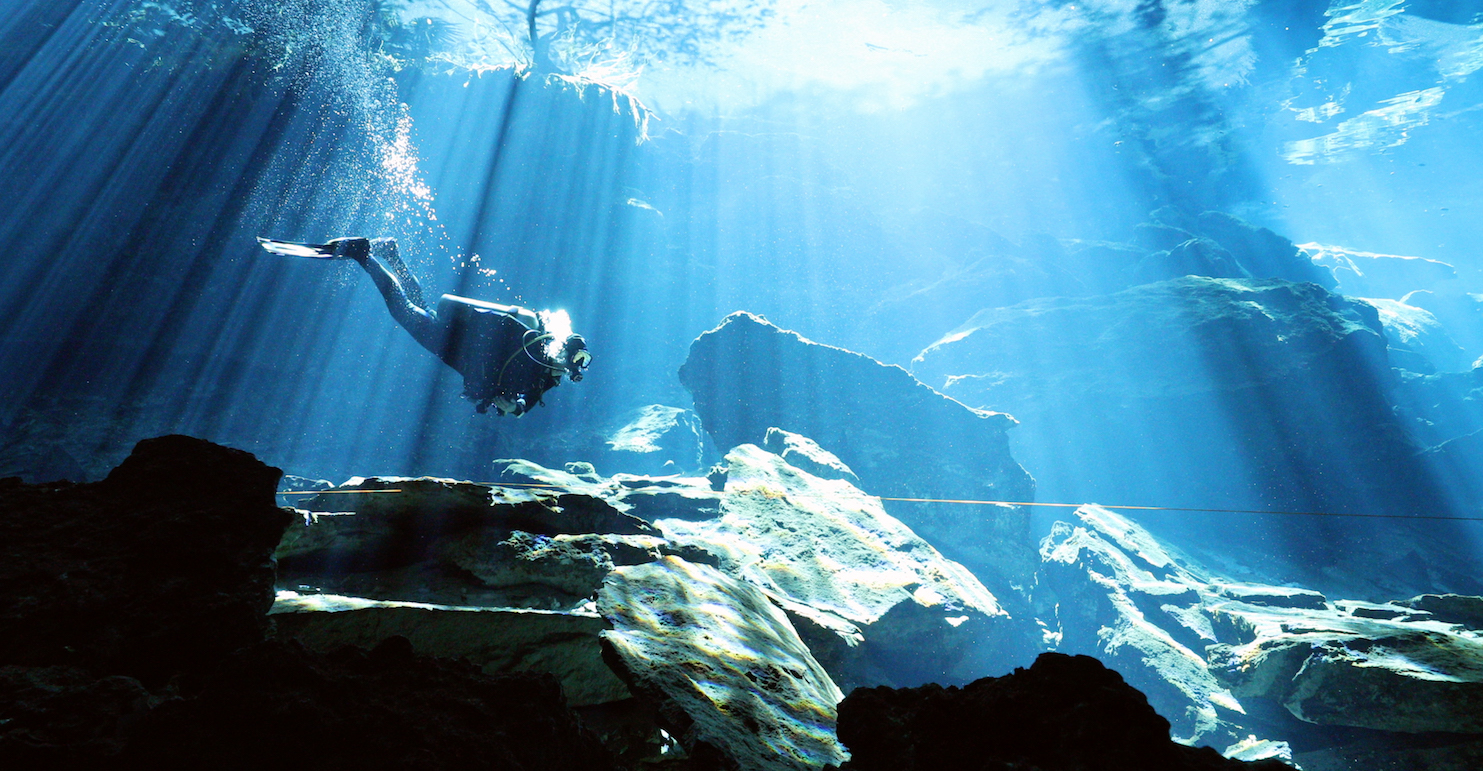
1. Casa Cenote
Casa Cenote, located 37 miles south of Playa del Carmen, is a site suited to open water divers. The dive follows the bottom of a winding river for roughly 250 yards (228m), with nothing overhead. Plus, the basin bottom is never deeper than 30ft (9m), making for an open-water-diver-friendly experience. Along the sides of the river, you’ll see the root systems of the mangrove forests, as well as a host of freshwater fish, including platys, guppies and mollies. Although there is a cave system (for qualified cave divers only), this is primarily an open water site.
2. Chikin Ha
This cenote, 20 miles south of Playa del Carmen, and no deeper than 42ft (12.8m), is primarily for cave divers, but it does have a cavern area. You won’t find a lot of stalagmites on the bottom, so there’s less to worry about for those who haven’t yet perfected buoyancy. What you will find is stellar visibility of 150ft (45m) or greater, plus ceilings full of stalactites. In spots, divers will experience a halocline, where freshwater and saltwater mix, creating a cloudy visual effect. Plus, thanks to its position in the jungle, it’s known for amazing light shows as rays of sunlight dance through the water during the height of the day.
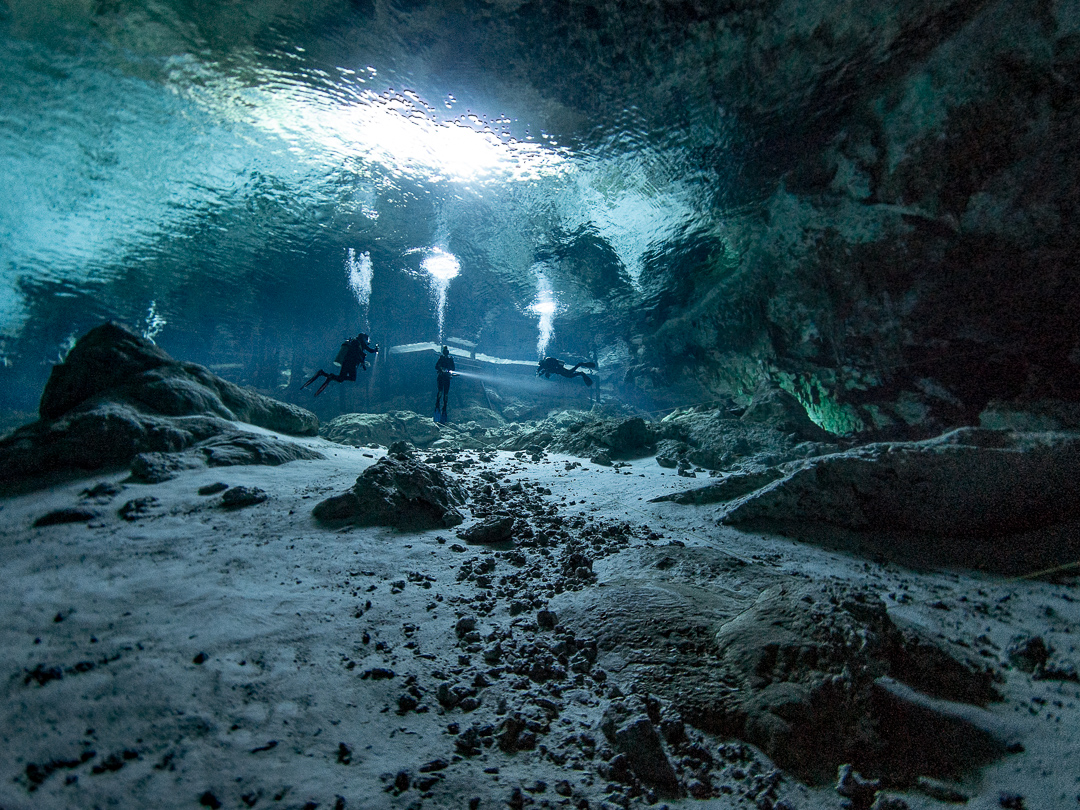
3. Dos Ojos
This cenote, so named “Two Eyes” for the two side-by-side cave systems, which, together form the largest cave system on the planet, is so long and varied in terrain that the majority of the system is obviously for cave divers, but there is still a lot suitable for qualified cavern divers and tours in the cavern sections. Snorkeling is also popular in the main basin. Even in the areas near open water, white stalactites decorate the ceilings of the cenote. In some parts, the formations are as thin as candles, and in other places, they have formed to be as wide as traffic cones.
4. Chac Mool
Nearby to Chikin Ha and Casa Cenote is Chac Mool cenote, which is appropriate for cavern divers and up, and for cavern tours. It starts with a short walk down stairs into a pool surrounded by jungle. This cenote is unique in that it winds between sections with limestone ceiling overhead and stretches that are completely open overhead with light pouring in. Plus, divers can look up in these openings and see the trees of the jungle above.
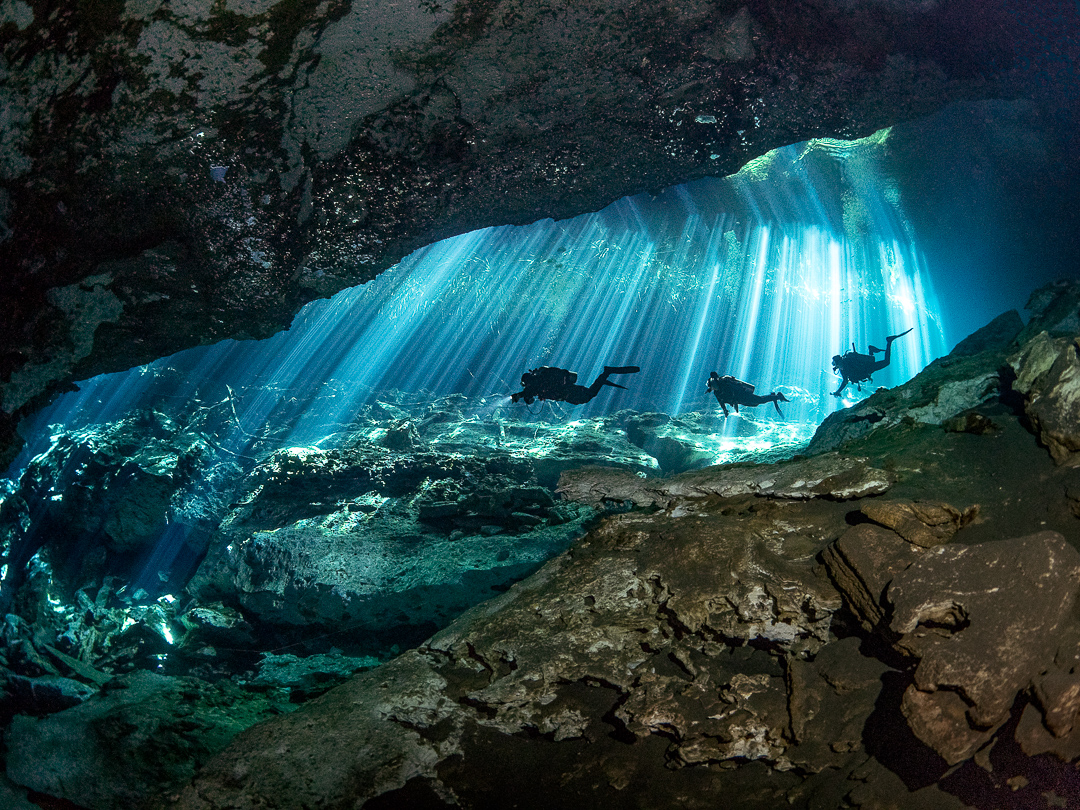
5. El Eden
Many repeat visitors name El Eden (also called Ponderosa) as a favorite for its location amid the jungle and its topography that varies between small rooms, narrowing passageways and massive rooms where light pours in. Plus, with slider turtles, freshwater eels and several fish species, including tetras and sailfin mollies, this cenote is home to more wildlife than nearby sites. It has lots of areas for swimming and snorkeling as well as for diving.
6. Tajma-Ha
Tours of this cenote, less than three miles south of the town of Puerto Aventuras, take divers through a figure-eight path that connects several rooms. The Points of Light Chamber contains stalactites that nearly reach to the floor, and, should you time your dive for midday, you’ll also witness the three shafts of light, bright and direct as spotlights. Reach the Sugar Bowl to find a circular pool that opens to the jungle above. Because of the large collections of stalactites, this dive requires divers to have decent control of their buoyancy. However, with a maximum depth of 50ft (15m), it’s still very welcoming for newer divers.

How To Prepare for a Cenotes Dive Trip
If you are planning a dive trip to Cenotes as an Open Water Diver there are some steps you can take to ensure that you are well prepared for your adventure.
Get Reactivated
If it’s been a while since your last dive consider taking the PADI Reactivate. This is a comprehensive refresher course and you can study the theory online to refresh your basic knowledge. This can be followed up with an in-water session at your local dive center to refresh your skills. Not only will this increase your confidence but also your safety, comfort, and enjoyment too!
Check Your Gear
If you are planning to travel to Mexico with your own gear don’t leave packing until the last minute. Check your gear early and if necessary get it serviced in advance of your travel. Broken or malfunctioning gear can reduce your enjoyment and result in additional gear rental costs.
Consider Accessorizing
When diving Cenotes you might want to consider some dive accessories. An underwater torch is a great option so you can choose one that is comfortable in your hand rather than using a rental light. If purchasing a light you’ll also want a lanyard and clip so you can secure it on your BCD.
If you don’t already have one, some type of audible device is good to have and easy to travel with. A pointer stick (tank banger) or a rattle are both excellent options.
Although it’s more of a financial investment, a dive computer is a great accessory that also increases safety. You’ll be able to track your dive time and depth. Some computers also allow you to download your dives to an online logbook – bonus!
Non-Divers Visiting
We don’t want you to miss out on these amazing dive sites. Cenotes are truly one of a kind, offering a unique and unforgettable experience. They’re a perfect way to get comfortable with the underwater world, explore stunning geological formations, and dive into crystal-clear waters. Cenotes provide an adventure like no other, so start your course today!
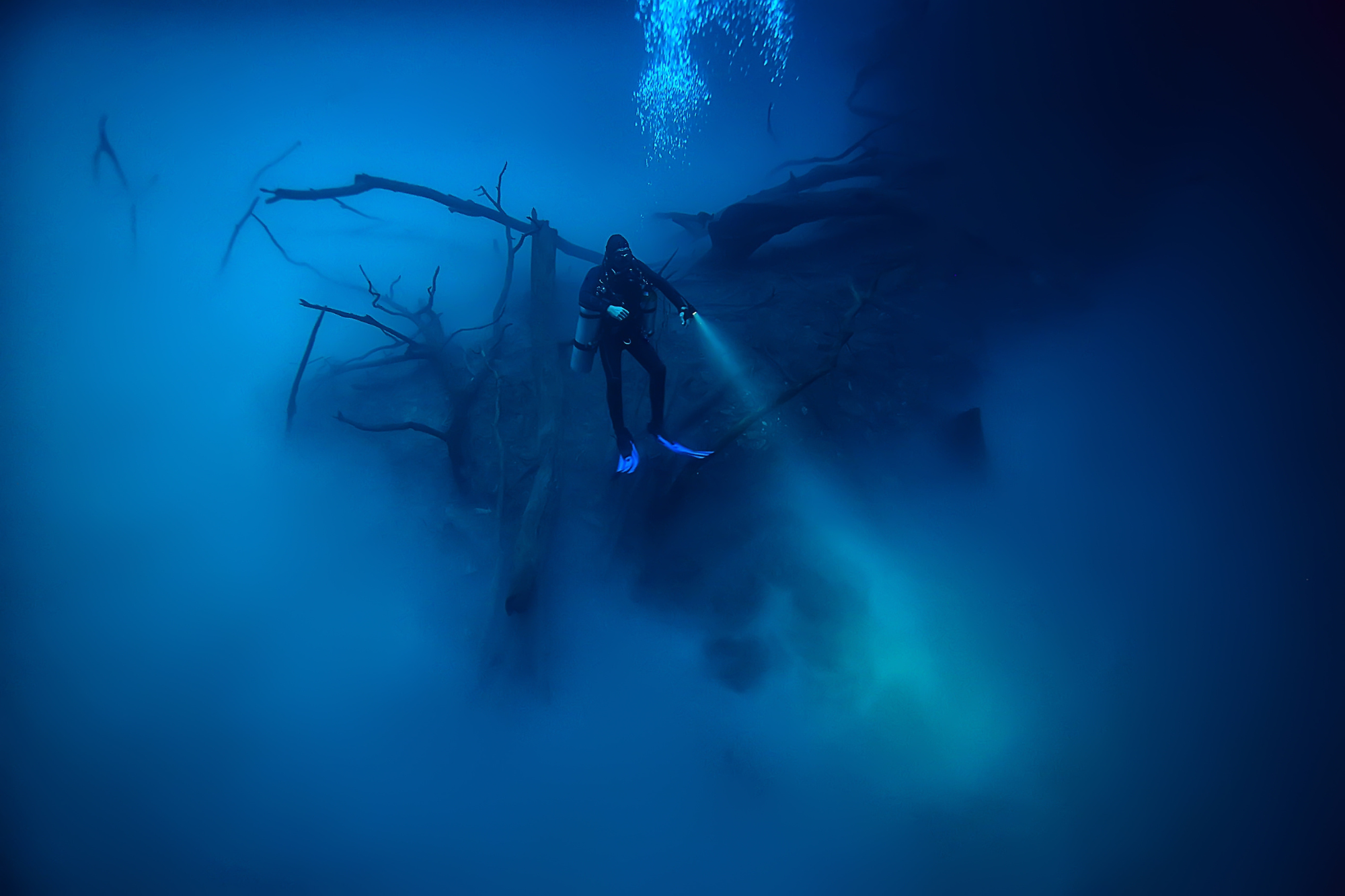
Book Your Diving in Mexico
Mexico is a highly popular destination for divers so make sure you book your diving in advance! PADI Adventures will geo-locate your position and tell you everything there is to do in your new location! Booking your diving adventures has never been easier!
